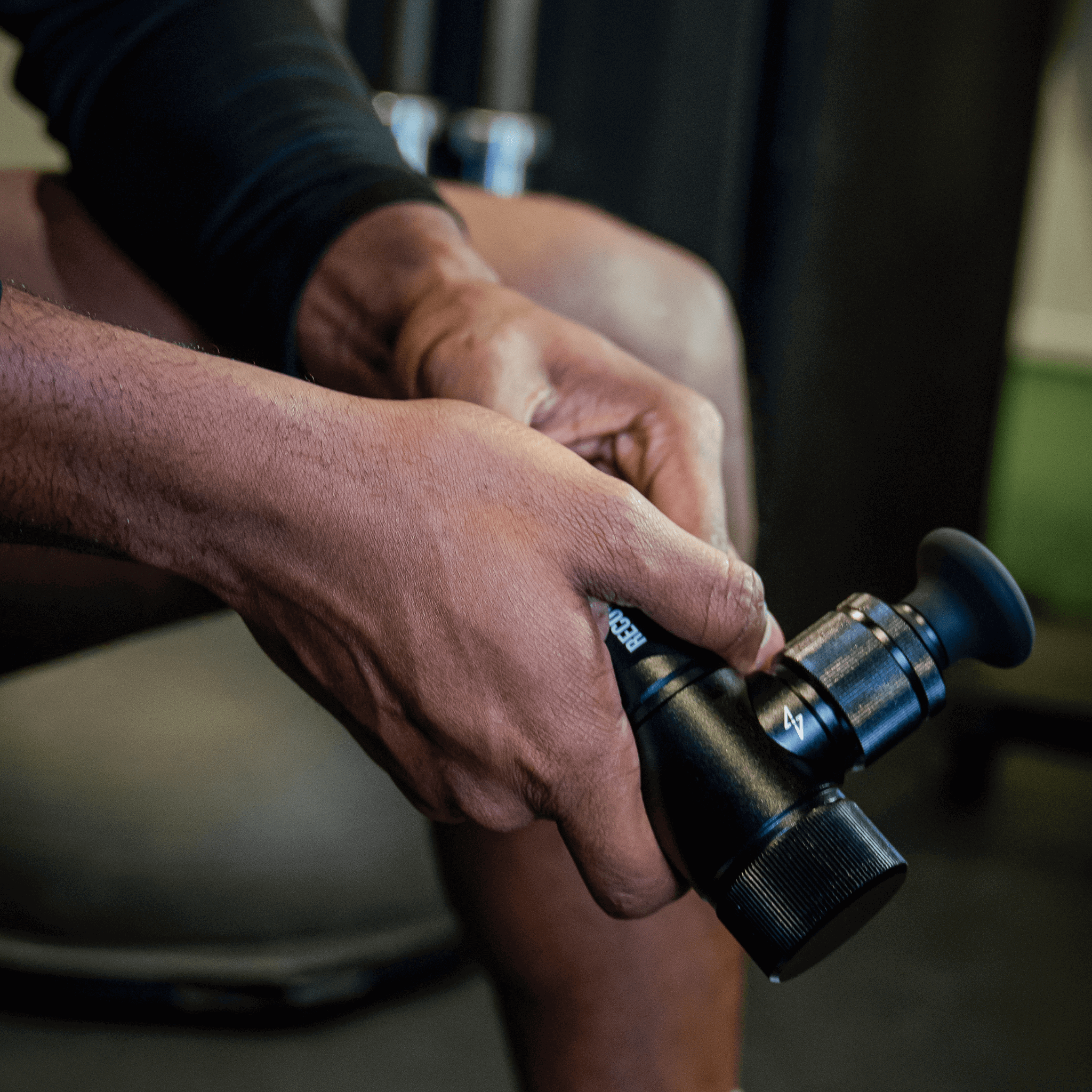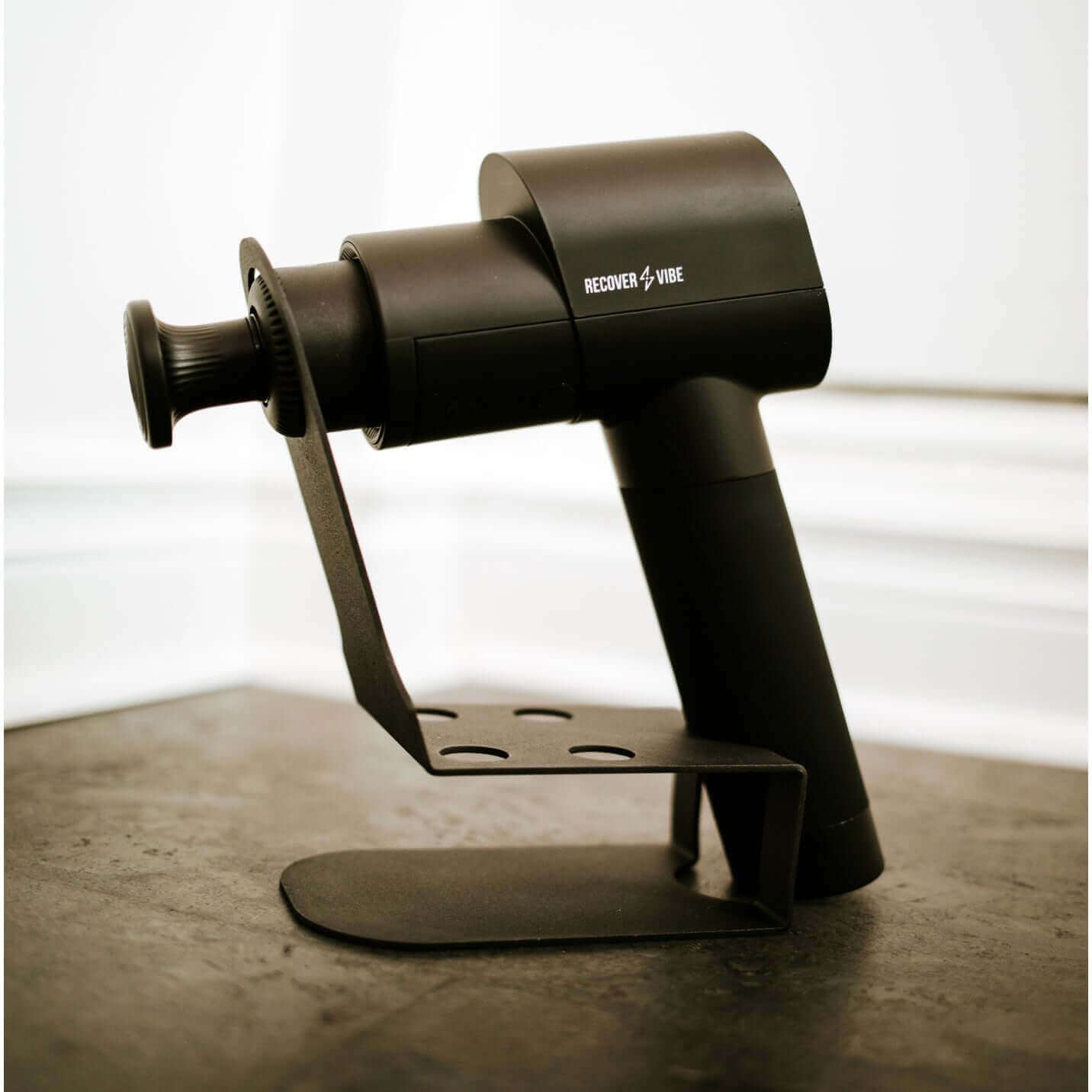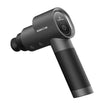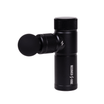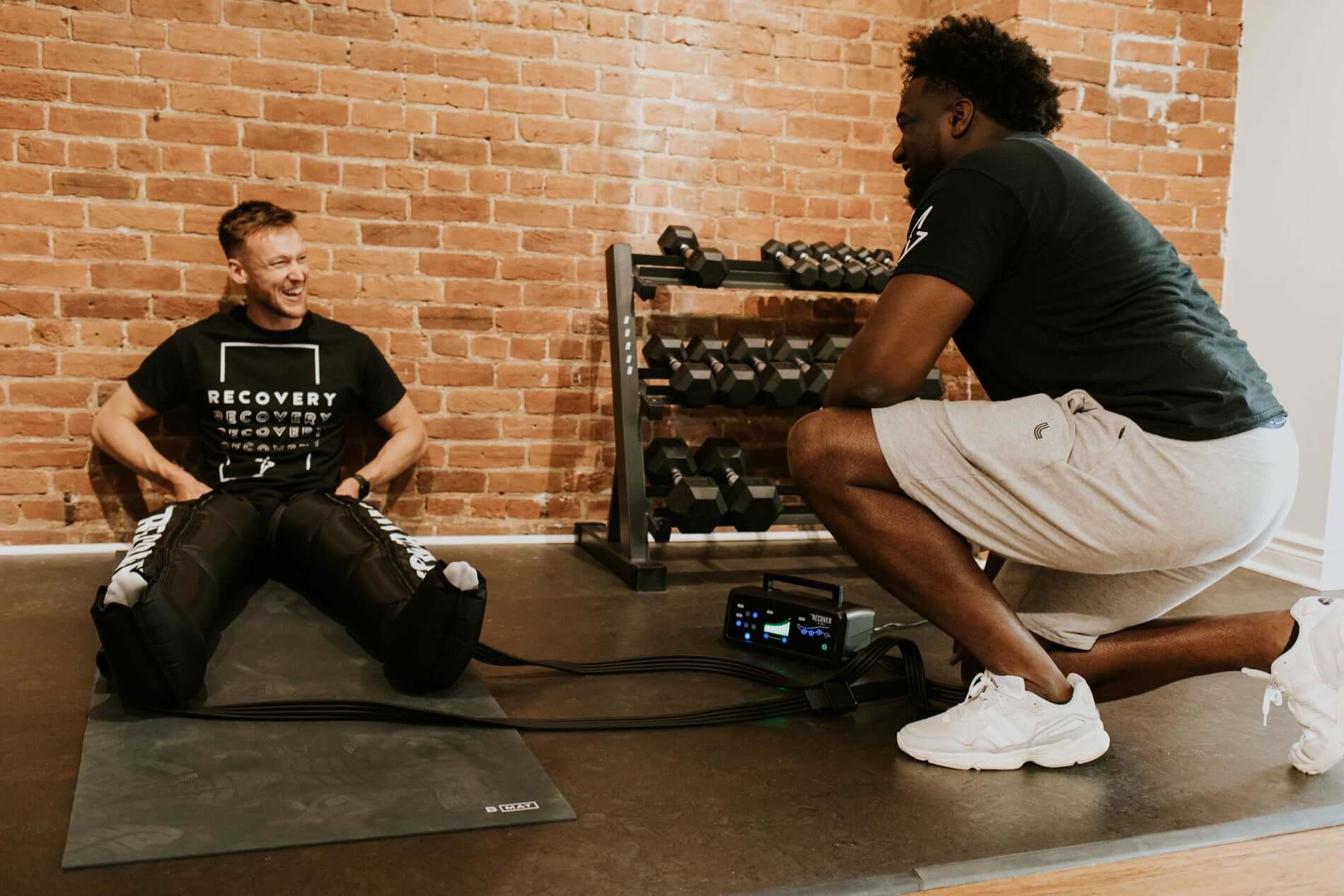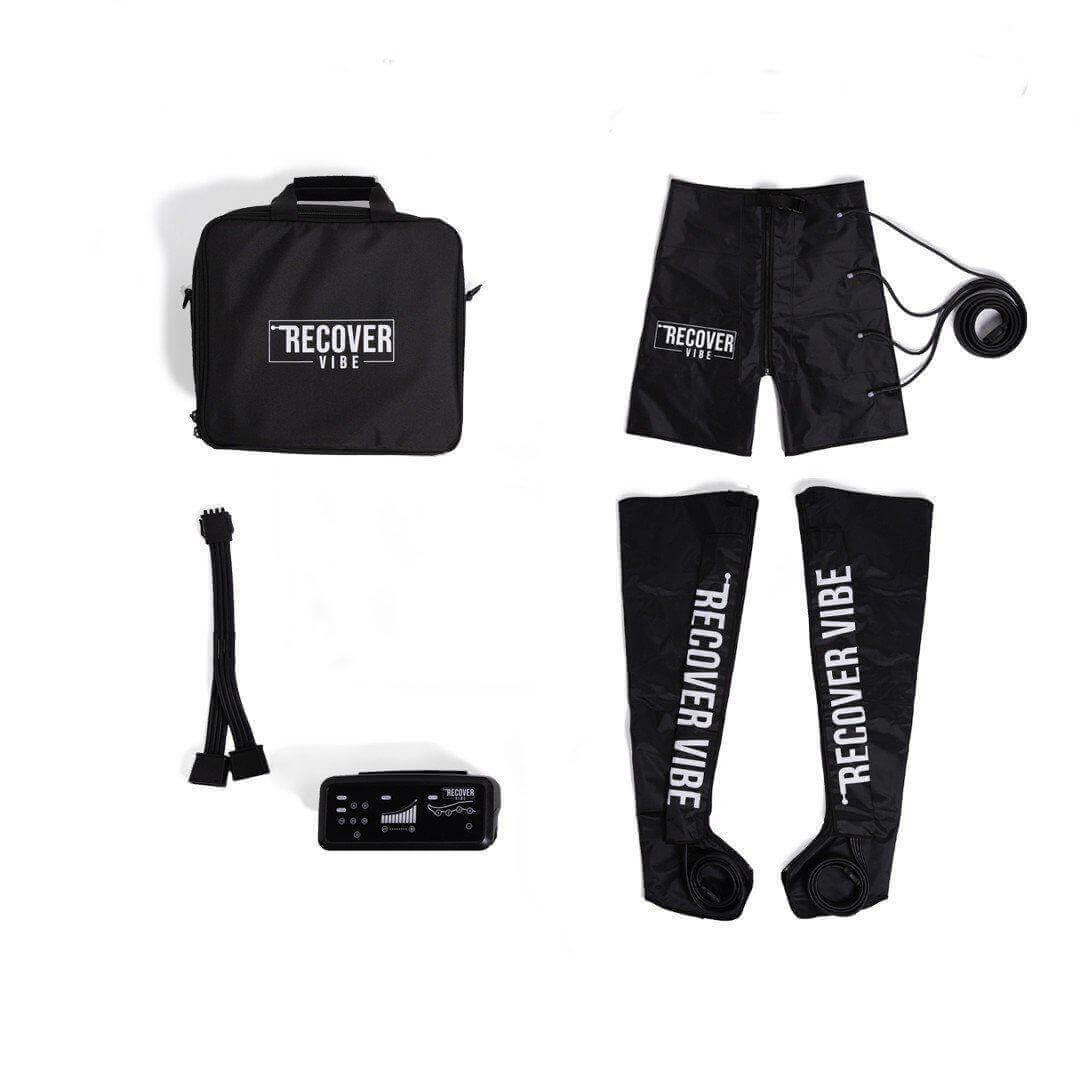
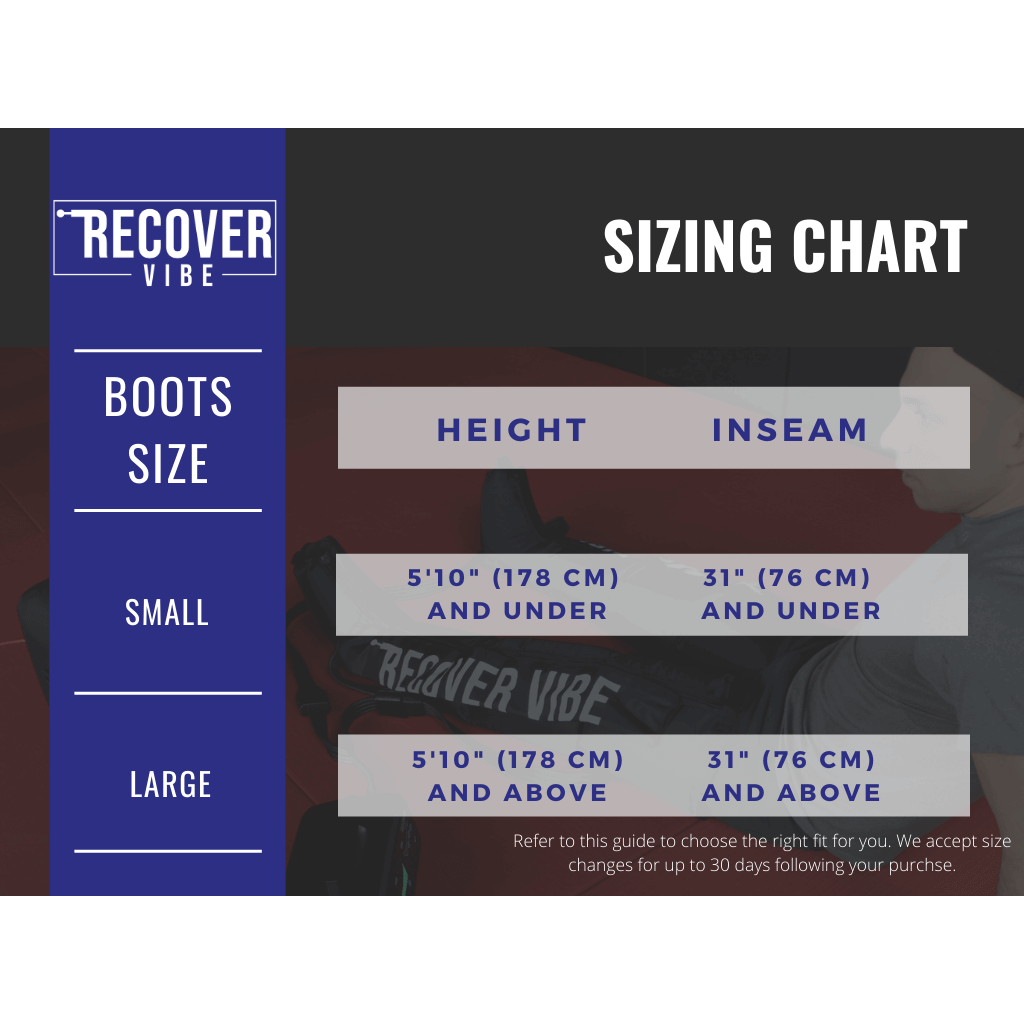
Recover Vibe Recharge Boots + Hips
The Boots + Hips Compression System is perfect for your entire lower body recovery. Benefit from an industry-leading recovery system.
FEATURES
- Select any of the 4 chambers you want to be activated
- Pick any two attachments with our dual adapter (one arm and one leg)
- Moderate the pressure (between 20-250 mm/Hg)
- Choose between two modes of recovery
INCLUDES:
- Recover Vibe Recharge Compression Unit
- Boots Attachment x2 (available in two sizes)
- Hips Attachment
- Dual adapter
- FREE Leg Extension Pieces x2 (97$ Value)
- FREE Padded Travel Case ($147 Value)
Orders ship within 1 business day and deliver in 2-5 days to Canada and the USA. For international shipping, contact support@recovervibe.com.
We're a Canadian company focused on getting you our products quickly and reliably. If you are not 100% in love with your products within 100 days, return it for a full refund, even if it is open and used.
We’ve partnered with Sezzle so that you can recover now, pay over time. You can choose split your payments in 4 and pay over 6 weeks interest-free. Want to know more about our payment plans? Click here.

Quick summary
Benefits You'll Love
Recover Faster
Pneumatic compression therapy, such as the Recover Vibe Recharge device, can help to reduce muscle soreness and fatigue by increasing blood flow and oxygen to the muscles. This can help athletes to recover more quickly from intense training and competition, allowing them to get back to training and competing at their best.
Reduce Muscle Soreness
Reduce muscle soreness and stiffness by breaking up knots and tension in the muscles. This can help alleviate pain and discomfort, allowing you to move more easily and comfortably.
Increase Blood Flow
Increase blood flow to the muscles, which can help bring oxygen and nutrients to the area and promote healing. This can lead to faster recovery time and improved overall muscle health.
Increase Range of Motion
Loosening tight muscles and fascia can help improve flexibility and mobility. This can be especially beneficial if you engage in regular physical activity, as it can help prevent injuries and improve performance.
Natural Stress Reliever
Promote relaxation by releasing tension and promoting the release of endorphins, the body's natural pain-relieving hormones. This can help reduce stress and improve overall well-being.
Pneumatic compression therapy, such as the Recover Vibe Recharge device, can help to reduce muscle soreness and fatigue by increasing blood flow and oxygen to the muscles. This can help athletes to recover more quickly from intense training and competition, allowing them to get back to training and competing at their best.
Reduce muscle soreness and stiffness by breaking up knots and tension in the muscles. This can help alleviate pain and discomfort, allowing you to move more easily and comfortably.
Increase blood flow to the muscles, which can help bring oxygen and nutrients to the area and promote healing. This can lead to faster recovery time and improved overall muscle health.
Loosening tight muscles and fascia can help improve flexibility and mobility. This can be especially beneficial if you engage in regular physical activity, as it can help prevent injuries and improve performance.
Promote relaxation by releasing tension and promoting the release of endorphins, the body's natural pain-relieving hormones. This can help reduce stress and improve overall well-being.

Our Story
From the Founder
My mission with Recover Vibe is to develop products and services that are both effective and affordable for consumers.
Through my multiple injuries and surgeries during my NCAA basketball career and my current studies in Physical Therapy, I understand the importance of proper recovery and injury prevention.
Lens-Harly Louis, MScAPT(c)
Answers To Your Questions
What are recovery boots?
Recovery boots are pneumatic compression devices that are designed to help athletes recover from intense training and competition. They work by using sequential compression to mimic the feeling of a deep tissue massage, which can help to reduce muscle soreness and fatigue.
Are recovery boots suitable for everyone?
Recovery boots are generally safe for most people to use, but it's always best to consult with your physician or physical therapist before using them. People with certain medical conditions or those who are pregnant should not use recovery boots.
How do recovery boots work?
Recovery boots use pneumatic compression to increase blood flow and oxygen to the muscles. The boots inflate and deflate in a specific pattern to mimic the feeling of a deep tissue massage, which can help to reduce muscle soreness and fatigue.
When can I expect to receive my Recharge Boots?
All orders are shipped within 1 business day from our warehouse located in Montreal, Canada. Below are the expected delivery times including processing time:
Canada
QC & ON: 2 days
Rest of Canada: 2-4 days
USA: 2-5 days
International: 3-10 days
Standard shipping usually takes 2-5 business days depending on your location. 1-2 Day Delivery is also available by choosing Express Shipping at checkout.
Can recovery boots be used for injury recovery?
Recovery boots can be used to help with injury recovery by promoting blood flow and oxygen delivery to the affected area. They can also help to reduce inflammation and pain. It's always best to consult with your physician or physical therapist before using recovery boots for injury recovery.
How often should I use recovery boots?
It depends on your individual needs and the intensity of your training. Generally, it is recommended to use recovery boots for 20-30 minutes after intense training or competition. You can also use them for shorter sessions throughout the day to help with recovery and injury prevention.

Some Amazing Brands Who Use Our Products
Proud to be the official recovery technology partner of:








